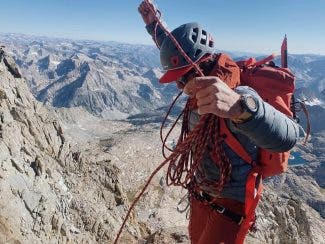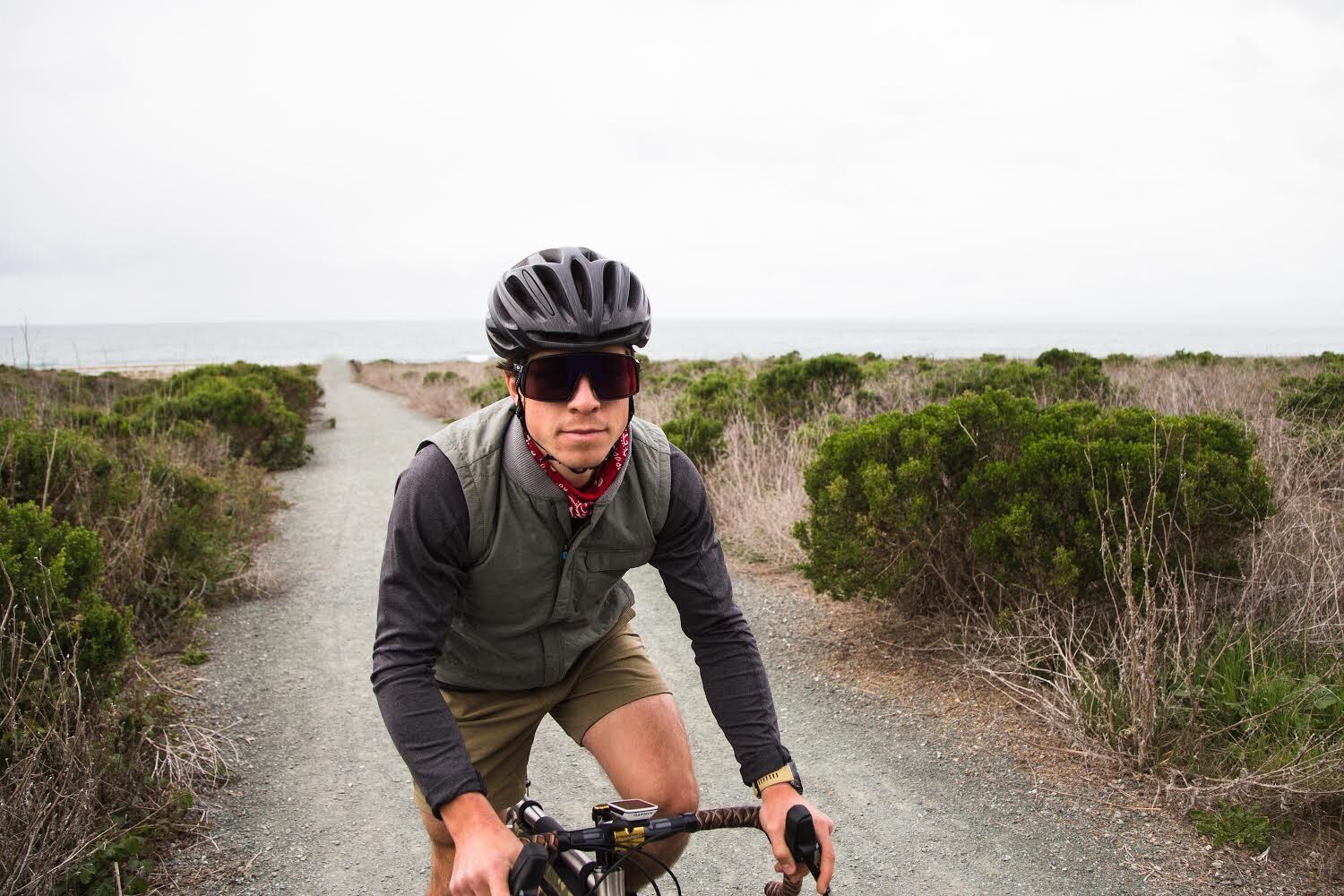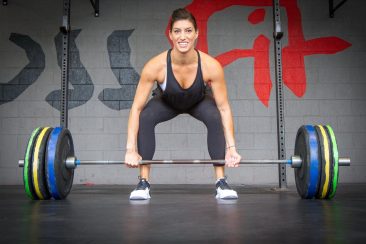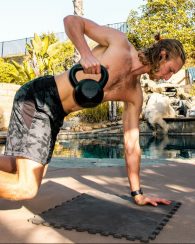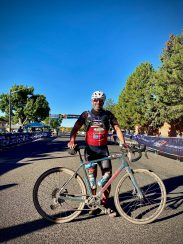Welcome back to another Happy Hour chat with Graham!
This week's guest, Conner Koch, cycled into Black Velvet Coffee shop in Mammoth Lakes, California, where Graham was stationed working on his laptop, and sipping some java. As soon as this group of gravel bikes caught Graham's eye, he knew he had to spark up a conversation with them. Given coffee shops have recently been closed down due to COVID-19, Graham was stoked to make this organic interaction with another fellow cycle-enthusiast, Conner. The two had much to discuss. So with all their knowledge, and passion for cycling, everyone at SportRx knew this story had to be shared. So pop yourself some corn shells, sit back in your lazy boy, and enjoy this awesome chat with Conner Koch below.

Pictured on left, Conner Koch. PC: Josh Wray
"Bikes bring people together! I'm convinced 2020 is the year of the bikes. I feel like more people are realizing how awesome and freeing they are; what it's like to feel like a kid again and get into adventures."
First things first, like any true cyclist would do, Conner tours us around his garage in Mammoth Lakes to show his many bags/packs and adventure junky tools.
G: So tell us, what it is that you do?
C: So everything we're doing is in the niche of categories. A lot of people are into running, climbing, biking, a lot of folks are into all three of them but in terms of combining them, the stuff we do is definitely subcultural. Lots of mountain towns do this but the basics of what we do are we ride our bikes to big mountains and then we climb them. Usually from our doorstep is the aesthetic, "human-powered", although there is a lot more that goes into it before you apply that. But yeah, we're human-powered adventurers, specializing in running, biking, and climbing. We specialize in higher altitude peaks and alpine climbing too.
G: Awesome! Give us your background on how you got into adventuring and climbing.
C: I'm originally a California guy, I grew up here. So as I was getting ready to graduate college I knew I didn't want the traditional path of moving to San Francisco and doing the Tech thing. So I was really fortunate as I was getting ready to graduate to be connected and mentored by a guy named Erik Weihenmayer. Erik is best known as the first blind man to climb Mount Everest. So he's totally blind, has prosthetic eyes, and he's been blind since he was a young teenager. Erik climbed mount Everest, climbed the 7 summits, the highest points on every continent, has kayaked in the grand canyon, in his own kayak. Which I think is crazier than Everest, its obviously difficult and a dangerous place to be for anyone but when you're hiking you can go at your own pace versus the canyon you only get one pace and that's the pace of the river. So all that to say, Erik is a pretty phenomenal guy.
So yeah after that connection I moved out to Colorado and was able to join Erik's team in Golden, Colorado. So for 4 years, I managed his speaking engagements, book sales, and PR and media. The side component of that job was that I got to spend 4 years traveling and climbing the world with Erik. Climbed some pretty epic mountains with him. Spent some time in Yosemite and the Pacific North West, Canada, lots of cool places. The thing about Erik is that a lot of people get thrown for a loop that this guy is blind and he's up on this peak, and people question what's the value of that if you can't see the view, but Eriks much more in the camp of experiencing things regardless of the barriers that are in your way, and he has this idea that you don't need sight to have a beautiful vision for your life.
So climbing with Erik and being his friend, partnering with the mountains with him was a special chapter in my life. Obviously that relates to SportRx because even blind guys need glasses, Erik would get bugs in his prosthetics if he didn't have shades on. Pretty special dude.
G: You dropped about 3 quotes in there that could be the title of our podcast or a book, that's awesome.
C: Well hey, some of them are books, on top of all that, Eriks also a Best Selling Author. I don't know how he does it all.
G: What a cool way to get into the sport. What's the climbing like out there in Colorado?
C: So my first big project was really the completion of the Colorado 14ers. For me, or really anyone out here in this space, I'm very goal-oriented, so we went out on this philanthropy hike and did a link-up of these 4 14ers, pretty near to Denver, didn't know it at the time but they're the easiest ones. You can do them all in a day comfortably if you're fit to climb. So I was looking at the list thinking, okay there's only 58, I just did 4, I just moved here, this is no big deal, I'll get them done by the end of the summer. I really didn't know what I had bitten off at the time, the 14ers are logistically complex, they're in the 4 corners of the state. Some are easy walkups, others are more dangerous depending on the conditions you do them in. but the 14ers project wasn't even an athletic achievement, it was more a way of me discovering my new home state.
But in terms of the culture of climbing out here, this is the headquarters of the climbing freaks. Everyone there is fitter than you, richer than you, better looking than you, it's nuts. I think that alone, the idea of iron sharpening iron, it's not a gimme, you cant just show up and expect the Strava points, you have to rise to the level of what the people out here are doing. It's hard at first but day by day you take those steps, go a little bit faster each day and you rise to that level. I think it's a cool way of paying your dues, just showing up and being the lead cause then there's nowhere to go but down. I'm grateful for the hard atmosphere of Boulder, Colorado.
G: I love that. Well, I have some corny questions coming from someone who doesn't climb. What is the most difficult, and the tallest peaks you've ever climbed?
C: Difficult is a difficult question to answer because there's a lot that goes into it. When you build in the different factors; your fitness, emotion status, weather conditions, your partner, or lack thereof, there's a lot of things that go into that that make that question difficult to answer. I can definitely tell you that lately this year we've had some tough days. I'd say a recent one was when we hiked the Palisades. The Palisades is a continuous ridge of 6, 14,000 peaks in California. You never go below 12,000, it's really exposed climbing, you're in 'no mistake terrain', pretty much the whole day and that wears on you mentally. It might not be physically the most difficult climb, the hardest climbing I've ever done but someone in isolation doing that in 'death fall consequence', you've already hiked snow peaks and root finding, all those things add up and can make it a hard day.
In terms of high mountains, I haven't done much abroad. I've been focusing on this concept, this idea of 'depth over breath'. The adventure model has often been how far away can I go, how remote is this peak, how extreme is it, has anyone ever touched it, can I get permits? All these things, they're beautiful, that's what you have to do to push that edge of exploration and new terrain. When you think about it that my adventures have been much more localized. I focus a lot on domestic depth; doing all the colorado 14ers, the California 14ers, and the Golden State Skyline, which we'll talk more about later. But the highest mountain I've attempted to climb is in Mexico. So the third highest peak in North America is called Pico de Orizaba and its a volcano. So we hustled up the mountain, we got warped by this storm up there, our tour didn't show up, it was a total debacle of al the things that can happen on a climbing trip. All that to say, we didn't summit Pico de Orizaba, but we got to about 18,000 ft and had an adventure. It was a fun weekend skiing in Mexico overall. But the highest peaks I've climbing domestically are all about 14,000 ft.
G: Okay that's super rad! I love stories like that. As long as you got back in one piece, right?
So we're at that point now, can't keep our viewers waiting any longer. Tell us about your upcoming adventure to take on the Golden State Skyline.
C: Yeah so we're headed up on the 13th. We're a Colorado-based crew, the Coyote Collective, we have essentially relocated to Mammoth for the summer for this specific project, to be in the CRS. So the GSS is a human-powered, self-supportive link-up of the 14,000 ft peaks in California. So California is home to 15 peaks over 14,000ft. I think because California is so big, those peaks get overshadowed. In Colorado, its trend to casually do those 14ers. The GSS is a way for us to take what we've done in Colorado and bring that style out here and take on a pretty amazing project. basically there's 13, 14kft in the Sierra, one across the valley called White Mountain and one way north, about 500 miles, called Mt. Shasta, they have totally different terrain and weather conditions. So by human-powered I mean, we'll start at Shasta on the 14th and then getting on our bikes, riding to the Sierra and then climbing the rest of the peaks on foot. So it totals up to about 800 miles of biking, 15 big peaks, 100 plus miles on foot, and a whole lot of vertical gain.
G: Sounds daunting, a huge task for sure. How long are you expecting it to take you guys?
C: Well we're lucky in the sense that this isn't a novel project. This has been done before. Interestingly enough by an Alex Honnold and Cedar Wright they did it in about 30 days, taking it at a relatively casual pace with some technical climbing. The next folks to do it, a guy named Sam, who we don't know, did it self-supportive style and did it in about 10 days. Another guy named Ryan Tates who lives about 200 meters from me here in Mammoth has the fastest known time on this link-up. So Ryan did it in just a hair over 9 days. He's been incredibly helpful with the beta and logistics for this trip.
I'll preface this by saying that the most important part of this for us is that this is an adventure. For me, I'm so grateful to be able to adventure with my best friends and tell a story around it and have the support of amazing brands that believe in what we're doing. I'm so humbled by the community that's come together behind this. We want to go out there and put a good time on it, so we're shooting for 8 & 3/4 days, so just under 9, which would be a new fastest known time (FKT).
G: Very exciting. So you mentioned gear and a few brands you're working with, what about in terms of nutrition? What do you do for food and hydration on the bike, running, and climbing?
C: There are a couple of things that are critical and you need with you when you're on and off your feet. Some stuff in that case that's always with us is clothing, nutrition, and navigation. So I'll go through each of those. In terms of nutrition, we use everything from Skratch Labs, it's Boulder-based. Skratch hydration provides us the amino acid, the electrolyte, and the recovery profiles we need. Skratch is where it's at. But for this, real food is really important too. We'll have the luxury of stopping at some gas stations along the way, but pretty much eating whatever is on the route . When you do something like this, you won't necessarily be getting the premium fuel you need, it's really just food is fuel at that point. You can't have a caloric deficit on a trip like this. Soft serve for breakfast, a meatball sub for lunch, whatever you can get really.
G: Right on. So let's talk about these 15 climbs! Of them, which would you say is the biggest hurdle that you think you'll face out there?
C: The biggest hurdle of all is the logistics and the number of things that can go wrong. But if you can get through all those things without anything catastrophic and you're dumb and tough enough to keep going, then you're probably going to make it. The way we're looking at the trip is broken down into chunks. This has been a long process, a year in the making for us. We start at Shasta, which is just one big peak, then we have 3 big days of riding so 150, 170, and 200 miles over those days. That's essentially the warmup and then we run up White Mountain. Though a lot of strong cyclists have told me that's the hardest climb they've ever done so we're planning on dropping our bikes and running up the West Ridge of White Mountain which is a different style than what's been done before. Following that we go to the valley of the Palisades which is definitely the most difficult part of the trip, you can't make mistakes here. There's a lot of technical climbing and snow and ice travel, a complex range. I would say if something does stop us or hold us back from making our time it would happen in the Palisades. Your life is on the line for a big chunk of it, it's not a place where you can mess up. But coming down from that we have Split Mountain, further south of the Palisades. Then we'll hit the Whitney Zone, we'll be going in from Shephard's pass, ditching our bikes there for good and then a 2 day overnight to push through for our finish. And yeah hopefully under 9 days, that's the whole shebang.
G: Amazing! What an incredible journey you guys are about to head out on. I wish you much speed and safety. That's super intense man.
Before you go, tell us what you'll be wearing out there on your trip?
C: Oh yeah, I bought these too, not sponsored. I wear the Oakley Sutro, they're just amazing. I feel like the terminator, they're like a +5 when you're really low you can bump yourself by wearing these, you feel a little bit faster, more impervious. The Oakley Sutros are where it's at. While we're at it too I'm basically blind , my vision is 22, 80 I think is my visual acuity, so prescription stuff is key for me.
G: Rad! well, I'm glad we got to everything.
